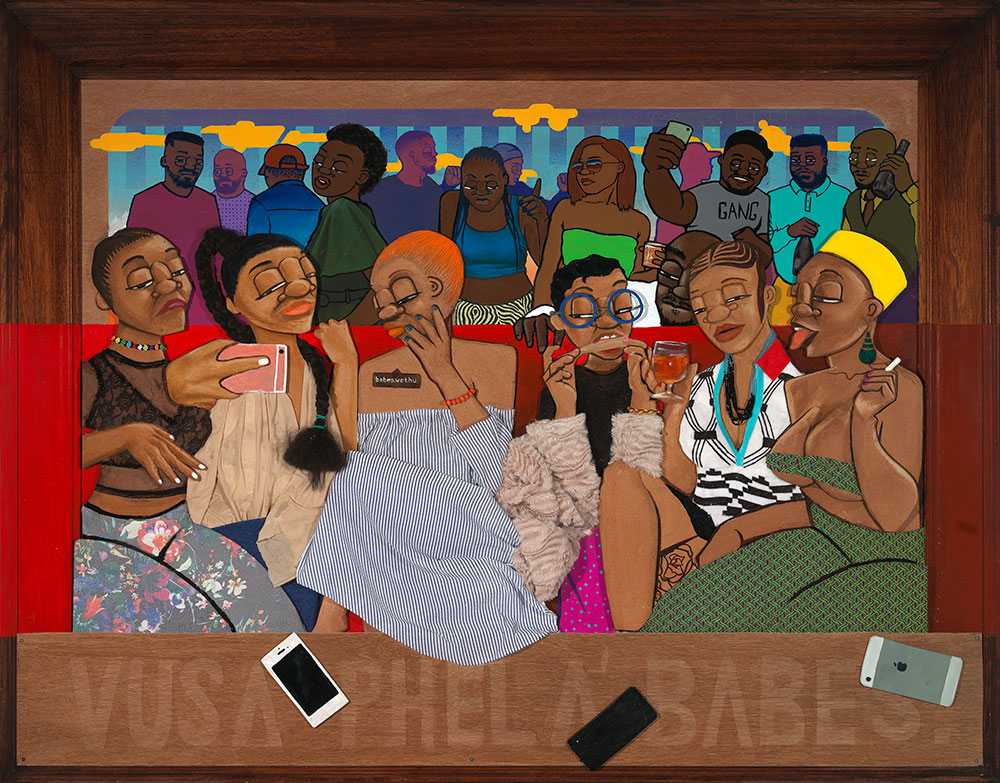By Sheila Wickouski

Traditions come together with modern technology to tell the stories behind the men and women featured in Heroes: Principles of African Greatness at the National Museum of African Art. This dynamic exhibition of classical and contemporary works links each work of art with a historic African, a “hero in history,” and a corresponding core value.
Unique to this exhibit is the way visitors will be able to access artworks on smartphones with the latest image recognition technology. Using the Smithsonian-developed, web-based HI application, viewers can scan an artwork to discover an added layer of digital content: including videos, images, and key facts that connect the artwork to its “heroes in history.” The digital exhibition will also be available on monitors in the gallery and on the museum’s website.
Paa Joe is an innovator of the Ghanaian artform of fantasy coffins, which are sculpted to memorialize the key accomplishments of a person’s life. His Fort William-Anomabu, a wood and enamel paint work rendering of the only European fort on the Gold Coast – built with a prison expressly to hold enslaved people – represents witness. Ousmane Sow’s mixed media work, Toussaint Louverture et la vielle esclave (1989), honors the black liberation leader of the Haitian Revolution (Louverture) and represents liberty.
Illustriousness is the core value of The Queen of Sheba, an Ethiopian painting by an unidentified artist, while graphic works like Ta-Nehisi Coates’ Black Panther feature superpowers.
Traditional art forms of masks and carved wooden statues, from as early as the 15th century, are interspersed with modern works. Africa Dances, a cold-cast bronze resin statue from Nigerian, Benedict Enwonwu, is one of the most beautiful in the show. The dancer in Dances seems to float with poise and pride as lighting casts a shadow to reveal its graceful contours from all directions. Representing dignity, the work pairs with historical hero Miriam Makeba.
More complex are pieces like Willie Bester’s mixed-media assemblage Apartheid Laboratory (1995). Representing malevolence, it is paired with a “villain in history,” Hendrik F. Verwoerd – the South African Prime Minister who moved to consolidate the apartheid state.
Nearby is a watercolor by former South African president Nelson Mandela, depicting the rock quarry in the prison on Robbins Island where he was exiled for decades. Representing the revolutionary, Mandela is the “hero” linked with his own work. His wife, Winnie Mandela, depicted in Sue Williamson’s lithograph Winnie Mandela and the Assassination of Dr. Asvatis, is aptly labeled “flawed” for her involvement in several murders.
Pride is well represented by a member of the “born-free generation” – gender nonconforming Dada Khanyisa. AMA #WCW, (“Ask Me Anything” and “Woman Crush Wednesday”, respectively) features six young women at a nightclub with their smartphones in hand. Embedded phones along with hair extensions, jewelry, and fabric on the surface of the table give the painting sculptural depth. The work takes on the look of an Instagram post, with further posts likely being composed on smartphones at the very moment depicted in the painting.

As an added treat, Heroes—Playlist, the museum’s first exhibition-specific playlist, with almost 60 selections, matches each hero with a musical selection. Recordings by Nina Simone, Miriam Makeba, Bob Marley, James Brown, Curtis Mayfield, and many others provide an immersive experience in this exhibit.
Heroes: Principles of African Greatness presents art and history in an exciting way that will exceed expectations. More information can be found at: https://africa.si.edu/exhibitions/current-exhibitions/heroes-principles-of-african-greatness/

